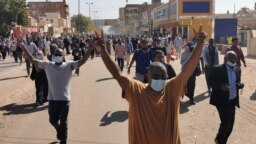With runoff election fast approaching, Big Tech failures in Brazil leave voters awash in disinformation
As the clock ticks down to Brazil’s presidential runoff this Sunday, the high-stakes race between incumbent President Jair Bolsonaro and former president Luiz Inácio Lula da Silva is being described as the most important election in recent history. Without a doubt, it is a stress test for the country’s three-decades-old democracy.
For Americans, following the headlines may invoke a strange sense of déjà vu. Throughout the campaign, Bolsonaro has consistently alleged, without evidence, that the country’s electronic voting system is vulnerable to widespread fraud and suggested the election is rigged against him. These claims have spawned a life of their own online, with some Brazilians openly plotting a January 6-style coup on social media if Bolsonaro loses.
“We have a full-blown Bolsonaro disinformation ecosystem,” the veteran Brazilian journalist Patrícia Campos Mello told the Columbia Journalism Review. “I am sure that, if he loses, he’s not going to accept the results. And he’s going to incite his supporters to go onto the streets.”
At the center of this so-called disinformation ecosystem are the Big Tech companies themselves. Election disinformation about Brazil is flourishing on YouTube, Facebook, Telegram, and WhatsApp. A recent study by the NGO Global Witness even found that Facebook and YouTube are approving advertisements featuring blatant election disinformation, despite repeated warnings. The tech giants are “fundamentally failing in their responsibility to stop democratic processes being undermined by false, misleading and purposeful deceit,” the organization wrote.
With voters awash in social media conspiracies and coup plots, content moderation in Brazil has taken center stage, with lawmakers courting controversial policy proposals on both ends of the spectrum. Last year, Bolsonaro issued a now-defunct order essentially prohibiting social media companies from removing content from their platforms in the absence of a court order — a first in global tech policy. Then, last week, in an effort to crack down on election misinformation, Brazil’s electoral court went in the opposite direction. It passed a new set of rules granting the country’s top elections official — Alexandre de Moraes, a frequent target of Bolsonaro’s attacks — the power to order social media platforms to remove content that violated prior takedown orders from the court. Platforms that don’t comply with takedown orders within two hours can be suspended country-wide for up to 24 hours.
Bolsonaro’s order sought to prevent companies from moderating content altogether, including blatant lies, while these rules give a tremendous amount of latitude to one individual. Bolsonaro allies and civil rights experts alike have expressed concerns about the unilateral power the policy grants the elections chief and its potential to censor political speech. Proponents, on the other hand, say it will help curb the election fraud conspiracies that have accompanied Bolsonaro’s campaign, and that pose an existential threat to the country’s fragile democracy.
IN GLOBAL NEWS:
The Saudi government’s crackdown on social media criticism may land a U.S. citizen behind bars — for 16 years. Saad Ibrahim Almadi, a U.S. national who also has Saudi citizenship, was detained while traveling from Florida to Riyadh to visit family, apparently over a series of tweets he posted while in the U.S. On October 3, a Saudi court handed the 72-year-old a 16-year prison sentence and an equally long travel ban for allegedly attempting to “destabilize the kingdom and supporting and funding terrorism.” According to Almadi’s son, Ibrahim, the only evidence used to sentence his father was 14 tweets Almadi posted, some of which were critical of the Saudi regime. Ibrahim also alleges that the government has tortured his father in prison. Almadi’s sentence is just one of a string of draconian punishments the regime has recently doled out in response to criticism on social media, including a 45-year sentence for a Saudi woman over anonymous tweets.
Texas public schools are rolling out a grisly DNA collection system to help parents identify their kids’ bodies in emergencies. Under the policy, which was launched as part of a 2021 law establishing a “child identification program,” schools are sending kits that parents can use to store their children’s fingerprints and DNA and hand to police in case they go missing. The plan, which went into effect in the state’s largest school district last week, is generating fierce pushback in the wake of the Uvalde school massacre less than six months ago, when family members of students whose bodies were unidentifiable after being destroyed by gunfire provided DNA samples to help identify the children’s remains. “It makes me physically sick,” one mom said of the program. Parents and critics have also expressed privacy concerns over the kits and the implications of providing students’ DNA and fingerprint records to law enforcement.
IN GLOBAL NEWS:
The Saudi government’s crackdown on social media criticism may land a U.S. citizen behind bars — for 16 years. Saad Ibrahim Almadi, a U.S. national who also has Saudi citizenship, was detained while traveling from Florida to Riyadh to visit family, apparently over a series of tweets he posted while in the U.S. On October 3, a Saudi court handed the 72-year-old a 16-year prison sentence and an equally long travel ban for allegedly attempting to “destabilize the kingdom and supporting and funding terrorism.” According to Almadi’s son, Ibrahim, the only evidence used to sentence his father was 14 tweets Almadi posted, some of which were critical of the Saudi regime. Ibrahim also alleges that the government has tortured his father in prison. Almadi’s sentence is just one of a string of draconian punishments the regime has recently doled out in response to criticism on social media, including a 45-year sentence for a Saudi woman over anonymous tweets.
Texas public schools are rolling out a grisly DNA collection system to help parents identify their kids’ bodies in emergencies. Under the policy, which was launched as part of a 2021 law establishing a “child identification program,” schools are sending kits that parents can use to store their children’s fingerprints and DNA and hand to police in case they go missing. The plan, which went into effect in the state’s largest school district last week, is generating fierce pushback in the wake of the Uvalde school massacre less than six months ago, when family members of students whose bodies were unidentifiable after being destroyed by gunfire provided DNA samples to help identify the children’s remains. “It makes me physically sick,” one mom said of the program. Parents and critics have also expressed privacy concerns over the kits and the implications of providing students’ DNA and fingerprint records to law enforcement.
WHAT WE’RE READING
- This harrowing Motherboard piece about how police are conjuring up images of suspects they’ve never seen based on DNA samples.
- This incisive look at the “rise of luxury surveillance” — technologies that millions of people happily buy into because they think they will improve their lives. “These gadgets are analogous to the surveillance technologies deployed in Detroit and many other cities across the country in that they are best understood as mechanisms of control,” writes surveillance expert Chris Gilliard for The Atlantic.
- Four years ago, researchers published a pioneering report that pulled back the curtain on racial and gender bias in facial recognition software. Nature explores how the landmark study is influencing research and regulation today. The researchers behind this study went on to found the Algorithmic Justice League. If you’d rather watch than read, check out Coded Bias, Shalini Kantayya’s acclaimed documentary about their work.
- An exposé by Forbes revealed that a team at TikTok’s parent company, ByteDance, planned to use the popular app to spy on the locations of specific Americans. “It is unclear from the materials whether data about these Americans was actually collected; however, the plan was for a Beijing-based ByteDance team to obtain location data from U.S. users’ devices,” writes Emily Baker-White.
Rayan El Amine, Isobel Cockerell, and Rebekah Robinson contributed to this edition.














